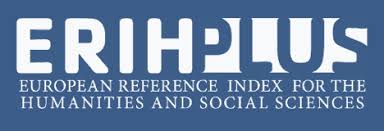№2, 2024
This paper analyzes one of the elements of the digital content-hyperlink issue in digital journalism. Firstly, the main definition of hyperlinks is given. Then hypertext content on several local news websites is analyzed and hyperlink usage in local news websites in Azerbaijan is described through empirical study. A study of the top 5 local news websites shows that hyperlink usage is not so widespread among tested websites. Moreover, the main issue here is data even how wrong can be hyperlinks used. For example, most of the time we can go just to the same page, or to the homepage of the current website by clicking on the hyperlink. This is meaningless, and not an ethical approach to the audience as well. In addition, the article attempts to interpret an online academic survey conducted among local news website journalists to know their hypertext habits, skills, understandings, and so on. Results show that general awareness of hyperlink usage exists among the survey participants, and they mainly use this technique to refer to external sources, or just to give background information (pp.82-87).
Bolter J. D. (2001). Writing Space: Computers, Hypertext, and the Remediation of Print. 2nd ed. Mahwah, NJ: Lawrence Erlbaum Associates.
Coddington M. (2012). “Building Frames Link by Link: The Linking Practices of Blogs and News Sites.” International Journal of Communication 6: 2007–2026.
Delaney, Edward J. (2008, March 12). “Frank Rich: Why I Link.” Nieman Journalism Lab.
http://www.niemanlab.org/2008/12/frank-rich-why-i-link/
Deuze M. (1999) ‘‘Journalism and the Web: an analysis of skills and standards in an online environment’’. International Communication Gazette 61(5), p 90.
De Maeyer J. (2012, March 27) Journalistic hyperlink. https://www.tandfonline.com/doi/abs/10.1080/17512786.2012.667273.
De Maeyer J. (2014) Citation Needed, Journalism Practice, 8:5, 532-541, doi: 10.1080/17512786.2014.894329
Doherty S. (2014) Hypertext and Journalism, Digital Journalism, 2:2, 124-139,
DOI: 10.1080/21670811.2013.821323.
Hyperlink. (2023, February 4). New World Encyclopedia. Retrieved 09:22, June 10, 2023, from https://www.newworldencyclopedia.org/p/index.php?title=Hyperlink&oldid=1099227.
Jarvis J. (2010, February 22) ‘‘New Rule: cover what you do best. Link to the rest’’. Buzzmachine, http://www.buzzmachine.com/2007/02/22/new-rule-cover-what-you-do-best-link-to-the-rest.
Larsson A. O. (2012). “Staying In or Going Out?” Assessing the Linking Practices of Swedish Online Newspapers. Journalism Practice. doi:10.1080/17512786.2012.748514.
Nieman Journalism Lab,
http://www.niemanlab.org/2010/06/making-connections-how-major-news-organizations-talk-about-links.
Stray J. (2010, June 10) ‘‘Making Connections: how major news organizations talk about links’’.
Thornburg R.M. (2011). “Producing Online News: digital skills, stronger stories”. CQ Press. p 171.
Ureta L., and Ainara. (2011). “The Potential of Web-only Feature Stories.” Journalism Studies 12 (2): 188–204. doi:10.1080/1461670X.2010.491300.
Zalova, S.M. (2024). Applying artificial intelligence technologies to inclusive journalism, Problems of Information Society, 15 (1), 64-71. http://doi.org/10.25045/jpis.v15.i1.07





.jpg)









